
Food preservation includes processes that make food more resistant to microorganism growth and slow the oxidation of fats. This slows down the decomposition and rancidification process. Food preservation may also include processes that inhibit visual deterioration, such as the enzymatic browning reaction in apples after they are cut during food preparation. By preserving food, food waste can be reduced, which is an important way to decrease production costs and increase the efficiency of food systems, improve food security and nutrition and contribute towards environmental sustainability. For instance, it can reduce the environmental impact of food production.
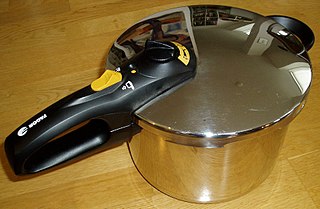
Pressure cooking is the process of cooking food under high pressure steam and water or a water-based cooking liquid, in a sealed vessel known as a pressure cooker. High pressure limits boiling and creates higher cooking temperatures which cook food far more quickly than at normal pressure.
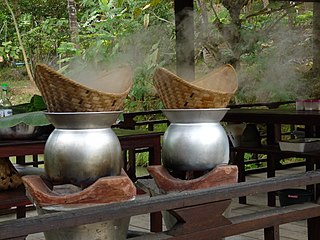
Steaming is a method of cooking using steam. This is often done with a food steamer, a kitchen appliance made specifically to cook food with steam, but food can also be steamed in a wok. In the American southwest, steam pits used for cooking have been found dating back about 5,000 years. Steaming is considered a healthy cooking technique that can be used for many kinds of foods.
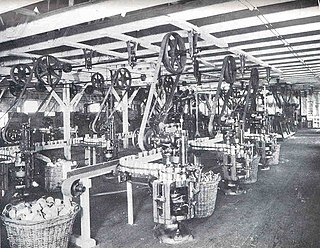
Canning is a method of food preservation in which food is processed and sealed in an airtight container. Canning provides a shelf life that typically ranges from one to five years, although under specific circumstances, it can be much longer. A freeze-dried canned product, such as canned dried lentils, could last as long as 30 years in an edible state.

A drink can is a metal container designed to hold a fixed portion of liquid such as carbonated soft drinks, alcoholic drinks, fruit juices, teas, herbal teas, energy drinks, etc. Drink cans are made of aluminum or tin-plated steel. Worldwide production for all drink cans is approximately 370 billion cans per year.

A jar is a rigid, cylindrical or slightly conical container, typically made of glass, ceramic, or plastic, with a wide mouth or opening that can be closed with a lid, screw cap, lug cap, cork stopper, roll-on cap, crimp-on cap, press-on cap, plastic shrink, heat sealed lidding film, an inner seal, a tamper-evident band, or other suitable means. The English word "jar" originates from the Arabic word jarra, which means an earthen pot or vessel.

A slow cooker, also known as a crock-pot, is a countertop electrical cooking appliance used to simmer at a lower temperature than other cooking methods, such as baking, boiling, and frying. This facilitates unattended cooking for many hours of dishes that would otherwise be boiled: pot roast, soups, stews and other dishes.
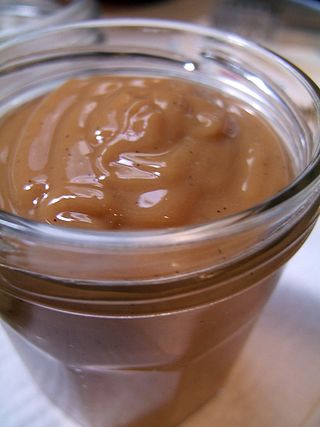
Dulce de leche, caramelized milk, milk candy or milk jam, is a confection popular in Latin America prepared by slowly heating sugar and milk over a period of several hours. The resulting substance, which takes on a spreadable, sauce-like consistency, derives its rich flavour and colour from non-enzymatic browning. It is typically used to top or fill other sweet foods.
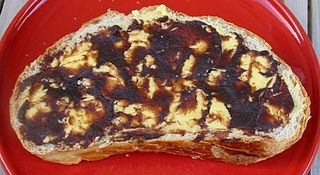
Apple butter is a highly concentrated form of apple sauce produced by long, slow cooking of apples with apple juice or water to a point where the sugar in the apples caramelizes, turning the apple butter a deep brown. The concentration of sugar gives apple butter a much longer shelf life as a preserve than apple sauce.

Sous vide, also known as low-temperature, long-time (LTLT) cooking, is a method of cooking invented by the French chef Georges Pralus in 1974, in which food is placed in a plastic pouch or a glass jar and cooked in a water bath for longer than usual cooking times at a precisely regulated temperature.

A Mason jar, also known as a canning jar or fruit jar, is a glass jar used in home canning to preserve food. It was named after American tinsmith John Landis Mason, who patented it in 1858. The jar's mouth has a screw thread on its outer perimeter to accept a metal ring or "band". The band, when screwed down, presses a separate stamped steel disc-shaped lid against the jar's rim.

Pickling is the process of preserving or extending the shelf life of food by either anaerobic fermentation in brine or immersion in vinegar. The pickling procedure typically affects the food's texture and flavor. The resulting food is called a pickle, or, to prevent ambiguity, prefaced with pickled. Foods that are pickled include vegetables, fruits, mushrooms, meats, fish, dairy and eggs.
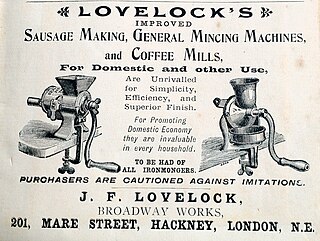
The origins of meat preservation are lost to the ages but probably began when humans began to realize the preservative value of salt. Sausage making originally developed as a means to preserve and transport meat. Primitive societies learned that dried berries and spices could be added to dried meat. The procedure of stuffing meat into casings remains basically the same today, but sausage recipes have been greatly refined and sausage making has become a highly respected culinary art.

The following outline is provided as an overview of and topical guide to food preparation:

Fruit preserves are preparations of fruits whose main preserving agent is sugar and sometimes acid, often stored in glass jars and used as a condiment or spread.

Canned or tinned fish are food fish which have been processed, sealed in an airtight container such as a sealed tin can, and subjected to heat. Canning is a method of preserving food, and provides a typical shelf life ranging from one to five years. They are usually opened via a can opener, but sometimes have a pull-tab so that they can be opened by hand. In the past it was common for many cans to have a key that would be turned to peel the lid of the tin off; most predominately sardines, among others.

A Weck jar is a glass jar used in home canning to preserve food. It has a rubber gasket with a glass lid.
The Fowler's Vacola jar is a molded glass jar used in canning for food preservation. It is the most popular home canning system in Australia.

Nicolas Appert was a French confectioner and inventor who, in the early 19th century, invented airtight food preservation. Appert, known as the "father of food science", described his invention as a way "of conserving all kinds of food substances in containers".

A multicooker is an electric kitchen appliance for automated cooking using a timer. A typical multicooker is able to boil, simmer, bake, fry, deep fry, grill roast, stew, steam and brown food.






















